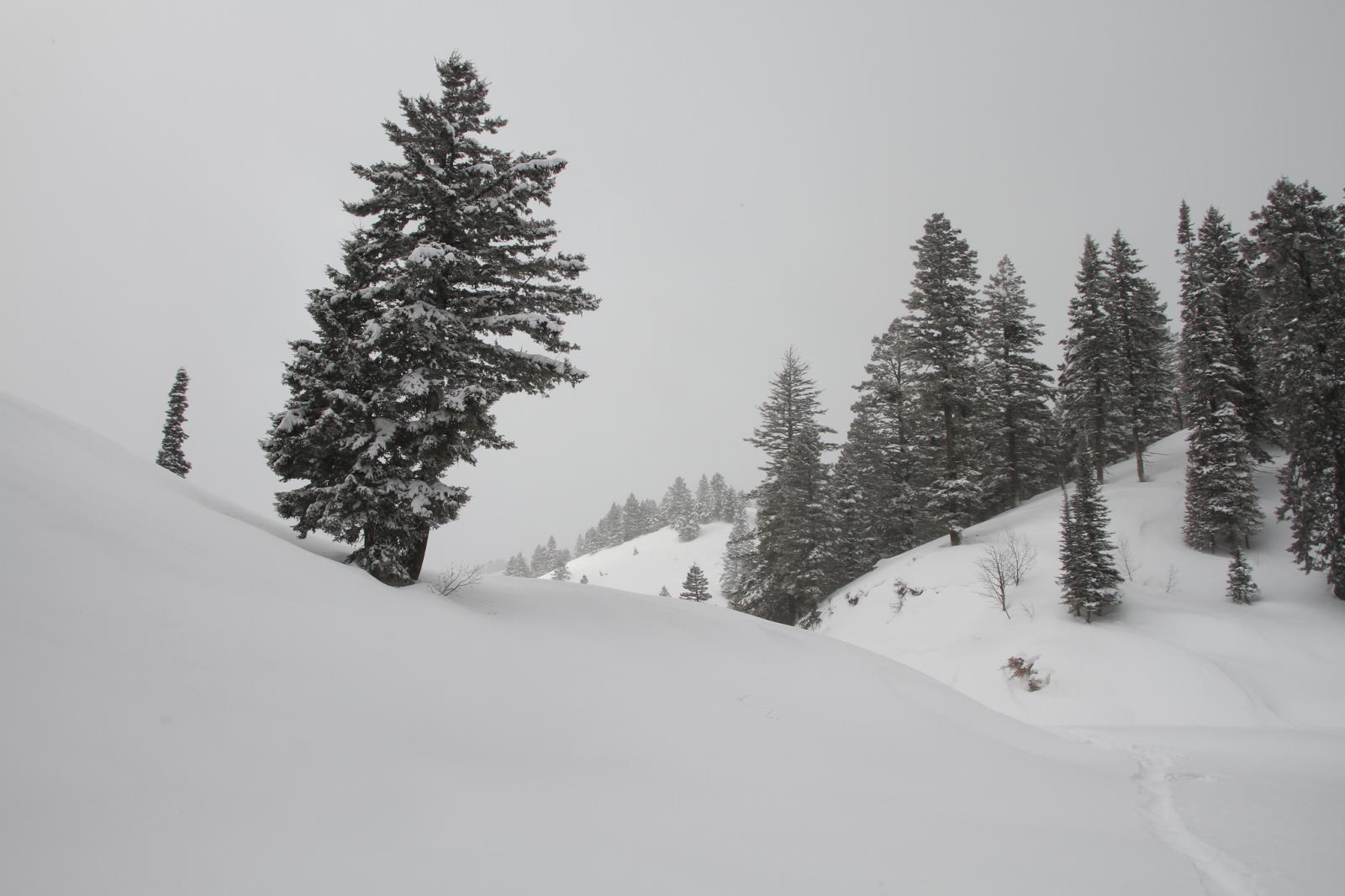Storms bring much-needed moisture to Idaho

By Sean Ellis
Idaho Farm Bureau Federation
POCATELLO – Early season storms that dumped large amounts of snow and rain across most of Idaho sent average snowpack levels in the mountains soaring compared to their historical norms.
But Idaho water managers caution that while the precipitation was sorely needed and certainly welcome following the severe drought conditions that plagued much of the state this year, a lot more is needed to ensure farmers and others have adequate water supplies in 2022.
“The storms were welcomed and it’s a good start but we still have a long way to go,” said Ron Shurtleff, watermaster for the Payette River system. “It is encouraging and gets us off to a good start. But it was just a drop in the bucket to where we need to be.”
Much of Idaho suffered severe drought conditions this year and water supplies were tight. Farmers and others who depend on water from the state’s reservoir systems are hoping for an above-average snowpack in the mountains this winter because it’s mainly snow melt that fills the reservoirs.
Idaho’s water year starts on Oct. 1 and the recent storms provided a good jump start to the season, water supply managers said.
“It is a fantastic start and we hope it continues along this path,” said Bob Carter, manager for the Boise Project Board of Control, which provides water to five irrigation districts in southwestern Idaho.
Water levels in reservoirs in the Boise River system and in other river systems across the state are well below normal and Idaho needs an abundant snowpack this winter to ensure the reservoirs fill to adequate levels next year.
“We have a big hole to fill and it’s going to take quite a bit of precipitation to get there,” Carter said. “Hopefully, this (early-season precipitation) will continue.”
Snowpack levels in basins throughout the state were well above normal following the recent storms, which began the weekend of Oct. 22-23 and brought plenty of precipitation.
In some instances, the snowpack levels were at absurd levels when compared to normal.
For example, in the Payette River basin, snowpack levels were sitting at 2,325 percent of normal as of Oct. 28.
While that number looks impressive, it’s very early in the water season and the mountains typically have very little snowfall this time of the year, Shurtleff said.
“A little bit on top of nothing can look like a lot,” he said.
In the Boise basin, snowpack levels were at 441 percent of normal as of Oct. 28, and they were 836 percent of normal in the Big Wood basin, 260 percent of normal in the Little Wood basin, 353 percent of average in the Big Lost basin, 536 percent of normal in the Raft basin, 633 percent of normal in the Salmon Falls basin and 426 percent of normal in the Bear River basin.
Snowpack levels were also well above normal in northern Idaho.
They were above 100 percent of normal in the basins that feed the upper Snake River reservoir system, which provides enough water to irrigate well over 1 million acres in southern Idaho.
The upper Snake system still needs a lot more snow to ensure an adequate water supply for irrigators next year, “but we’re off to a good start,” said Tony Olenichak, program manager for Water District 1, the state’s largest water district, which encompasses the upper Snake system.
The recent storms hit all the areas in Idaho that needed moisture the most, said Corey Loveland, supervisory hydrologist for the National Resources Conservation Service’s Idaho snow survey program.
“We got snow and rain in all the places that needed it the most,” he said. That included the central and southcentral mountains, Boise area mountains, East Idaho and the upper Snake River region.
Like other water supply specialists, Loveland cautioned that it’s still very early in the water year and a lot more snow has to accumulate in the mountains in order to ensure ample irrigation supplies in 2022.
He said the storms helped improve soil moisture levels, which is important because if soil is too dry next spring, like it was this spring, a lot of snow that melts won’t make it to the reservoirs, which are the lifeblood of southern Idaho and supply the water that irrigators need to make it through the hot, dry summer months.
“The drought is not over until the reservoirs are full,” Loveland said.
Still can't find what you are looking for? Find by topic:
- Achievement Award (YF&R)
- Actions Alerts
- Advocacy
- Ag Ambassadors
- American Farm Bureau
- American Farm Bureau Policy Book
- Archive Photos
- Articles
- Board of Directors
- Calendar - State/District
- Calendar - County
- Capitol Reflections
- Collegiate Chapters
- Committee Application Form
- Commodities
- Convention Annual
- County Presidents & Board Information
- County Resource Page
- Delegate Form
- Discount Programs
- Discussion Meet
- Discussion Meet - High School
- Education Programs
- Events
- Excellence Award (YF&R)
- Expense Voucher
- Flickr
- Gem State Producer
- High School Discussion Meet
- High School Speech Contest
- Hope in Idaho Ag
- House of Delegates Credentials Form
- IFBF Board of Directors
- IFBF Policy Book
- IFBF Staff
- Insurance
- Legislative Action Program
- Legislative Issues
- Library
- MAC Trailer
- Magazines
- Map My Benefits
- Member Benefits
- Member Discount
- Membership Application
- Mission Statement
- Moving Agriculture to the Classroom
- Newsletter Sign up
- News Releases
- News Room
- Open Range Law
